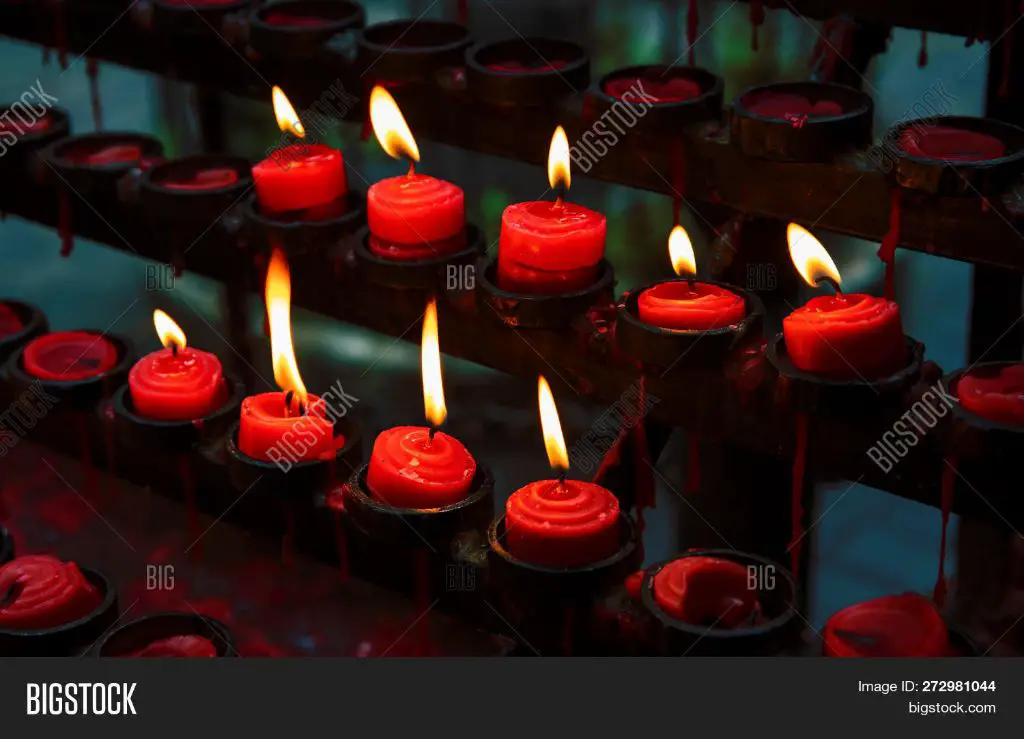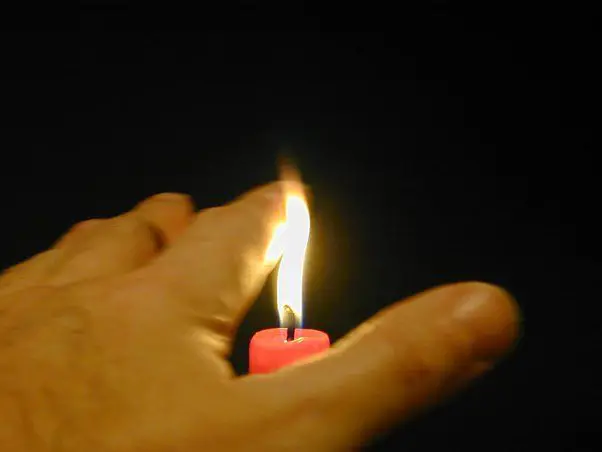Does Praying With Candles Work?
The practice of praying with candles has a long history across many religions and cultures. Candles have been used in spiritual rituals and ceremonies for thousands of years. From Catholicism and Judaism to Hinduism and Paganism, many faiths incorporate candle burning as a symbolic way to connect with the divine. The light produced by the candle’s flame is considered sacred and purifying. It represents the brightness of hope, faith and inner light. Candles are often lit alongside prayers or affirmations as an offering of oneself to God or the universe. The ascending smoke is seen as transmitting one’s petitions heavenward. Lighting candles can aid meditation, focus, spiritual reflection and connection with sacred figures or divinities. This practice spans across continents, with venerable traditions in Europe, Asia, Africa and the Americas.
Psychological Benefits
Praying with candles can provide various psychological benefits through the placebo effect and focused attention (https://candletime.nl/blog/psychological-benefits-of-scented-candles/). The placebo effect refers to improvements that occur due to one’s belief in the treatment, not from the treatment itself. Lighting candles can elicit positive expectations about the effects of prayer. Just the act of taking time to carefully light the candles and observe the flames can put people in a focused, contemplative state to pray more meaningfully. Staring at the hypnotic flickering of candle flames can promote relaxation, lower anxiety and stress, and increase concentration during prayer (https://janeclavis.com/blogs/news/psychological-and-emotional-benefits-of-burning-candles). Overall, candles can provide a powerful visual focal point to enhance the mindfulness, emotion, and perceived benefits of prayer through psychological mechanisms.
Symbolic Significance
Lighting candles has long held symbolic meaning in many religions and cultures. The flame of a candle is often used to represent divine light or enlightenment overcoming darkness. As explained by Mercy Home, “The candle represents Jesus Christ, the Light of the World, dispelling the darkness of sin and death” (Source). The paschal candle used during Easter in some Christian traditions also symbolizes Jesus as the light of the world after his resurrection.
Offering candles is seen as a way to honor deities or sacred figures. According to Common Good, “In many Catholic and Orthodox churches, votive or devotional candles are placed before sacred images and Burn as prayers in visual form” (Source). Lighting a candle represents offering light to a deity or sacred figure while saying a prayer. The flame can also symbolize the prayer continuing even after the person leaves.
Scientific Studies
There have been a few scientific studies that have examined the efficacy of praying with candles. One study published in the journal Mental Health, Religion and Culture looked at lighting candles and writing prayers in churches in rural Cornwall, England [1]. The researchers found that these practices provided therapeutic benefits for those engaging in them. However, the study was purely observational and did not include a controlled experiment to truly test the effects of praying with candles.
To date, there have been no rigorous, controlled trials that have demonstrated that praying with candles produces effects beyond psychological and emotional benefits. Without controlled experiments comparing praying with candles to praying without, it’s difficult to attribute any specific effects directly to the candles themselves. More research is needed to determine if candle prayer provides benefits beyond standard prayer practices.
Purported Supernatural Effects
Many spiritual practices believe that candles can be used for supernatural purposes beyond just providing light. Some common purported uses of candles in magic and ritual include:

Protection
Burning certain colored candles is believed to ward off evil spirits or negative energy. For example, a blue candle may be lit for protection before bed or leaving the house (Source: https://www.llewellyn.com/journal/article/477). Protective candles may be dressed with herbs or oils to strengthen their effects.
Divination
The way a candle burns, shapes wax drips, flickers, or goes out may be interpreted as signs and omens. For example, a sputtering candle flame may signify impending danger (Source: https://forestofwisdom.com.au/blogs/into-the-forest/beginner-s-guide-to-spell-candle-magick-and-colour-correspondences). Candle reading is used for divination in practices like ceromancy.
Manifestation
Candles can be carved, dressed, or burned in specific rituals to manifest goals and desires, like attracting love, money, or healing. For example, an orange candle dressed with cinnamon may be burned while visualizing a new job (Source: https://www.everand.com/book/595788294/The-Power-of-Candle-Magic-Spells-and-Rituals-for-an-Abundant-Life). The candle flame amplifies the practitioner’s focus and intention.
How Different Religions Use Candles
Candles play an important symbolic role in many different religions around the world. Here’s an overview of how some major religions incorporate candles into their practices:
Catholicism
Candles are commonly used in Catholic masses, religious processions, and personal prayer. The Catholic Church teaches that candles represent the light of Christ. They are lit on altars to honor Christ’s presence and during sacraments like baptism and confirmation to represent the Paschal candle. Votive candles are lit by worshippers praying for special intentions or saints’ intercession (The Role Of Candles In Religion).
Wicca
Wiccans use candles of specific colors aligned with elements, seasons, goals, and deities. Candle flames represent the element of fire and are lit on altars or in spells. Meditating before a candle represents focusing energy and intention (Light It Up: How Do Religions Around The World Use Candles).
Hinduism
Hindus light oil or ghee lamps during puja ceremonies to represent divine light. Lamps are often lit during festivals like Diwali. Light symbolizes hope, knowledge, and auspiciousness. Lighting lamps is believed to ward off evil (Ceremonial use of lights).
Buddhism
Candles and lamps are lit in Buddhist temples and homes as offerings. Butter lamps represent the light of Buddhist teachings dispelling ignorance. Candles symbolize enlightenment and are placed on home altars during meditation (Light It Up: How Do Religions Around The World Use Candles).
Step-by-Step Guide
Here is a simple step-by-step guide for setting up prayer candles to enhance your practice:
- Choose your candle – Select a candle meaningful to your intention, such as a specific color associated with what you are praying for. Beeswax candles are often preferred.
- Anoint the candle – You can anoint your candle with oils or herbs to further imbue it with purpose. Rub the oils along the outside of the candle.
- Light the candle – Use a lighter or match to light the wick of the candle.
- State your intention – Once lit, take a moment to state your intention or say a prayer of what you want the candle to represent.
- Gaze at the flame – Look at the flickering flame as you pray to focus your mind.
- Let it burn – Let the candle burn down completely if possible, though blow it out if needed.
- Repeat – You can repeat with a new candle on a regular basis for ongoing prayer focus.
With a few simple steps, prayer candles can become an enriching part of your spiritual practice.
Tips and Precautions
When using candles in prayer, it’s important to keep safety in mind. Here are some tips and precautions to follow:
Practice fire safety – keep candles away from flammable materials, don’t leave burning candles unattended, and keep out of reach of children and pets. Have a fire extinguisher or baking soda on hand to quickly extinguish any accidental fires (source).
Don’t rely solely on candles – while candles can enhance prayer through symbolism and atmosphere, the prayers themselves hold the true power according to religious beliefs. Use candles to complement your prayers rather than replacing them (source).
Consider electronic candles – these provide the lighting effects without the fire hazard. However, traditionalists argue that real wax candles have a deeper symbolic meaning.
Start with one candle – some people recommend lighting a single candle when first incorporating candle prayer until you get the hang of proper safety practices.
Consider your religious guidelines – some religions have specific traditions around color symbolism, materials, number of candles, etc. Research how your faith uses prayer candles.
Frequently Asked Questions
Here are some common questions people have about praying with candles:
What types of candles should I use?
You can use taper candles, votive candles, pillar candles, or tea lights. Beeswax and soy candles are popular choices as they are natural and environmentally friendly. Color can be significant, with common colors being white, red, blue, green, yellow, pink, purple, gold, and black (source).
Where should I place the candles when praying?
You can place candles on your altar, mantel, windowsill, or table. Make sure to put them somewhere safe and stable. Some people like to arrange them in a circle or semi-circle pattern. Place them at eye level so you can gaze at the flames during prayer (source).
How many candles should I light?
You can light as many candles as you want, but 1-7 candles is typical. Some people light a candle for each person/intention they are praying for. Group similar intentions into one candle if you have a lot (source).
When should the candles be lit?
You can light the candles before you begin praying, as part of your prayer ritual. Let them burn during the entire time you are praying. Some people let them continue burning after the prayer while the intentions manifest (source).
Is praying with candles biblical?
The Bible does not specifically mention praying with candles, but it is not prohibited. Candles are seen in worship in both Old and New Testaments. Using candles can help focus the mind during prayer (source).
Conclusion
Praying with candles can provide various benefits, both psychologically and spiritually. The flickering flame offers a focal point for meditation and contemplation. The candlelight creates a peaceful ambiance that many find soothing and calming. Different colors hold symbolic meaning in terms of healing, clarity, protection and more. While scientific studies on the tangible effects of candle rituals are limited, many spiritual traditions incorporate candles into their practices. With reasonable precautions, praying with candles can be a meaningful part of one’s faith journey or self-care routine, helping center the mind and connect on a deeper level during prayer or meditation.




